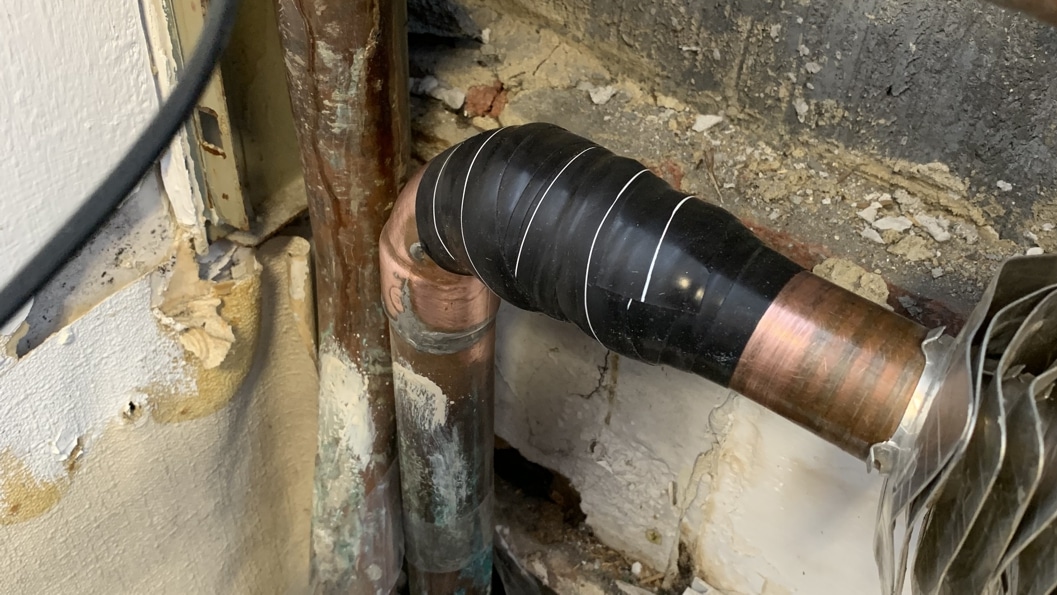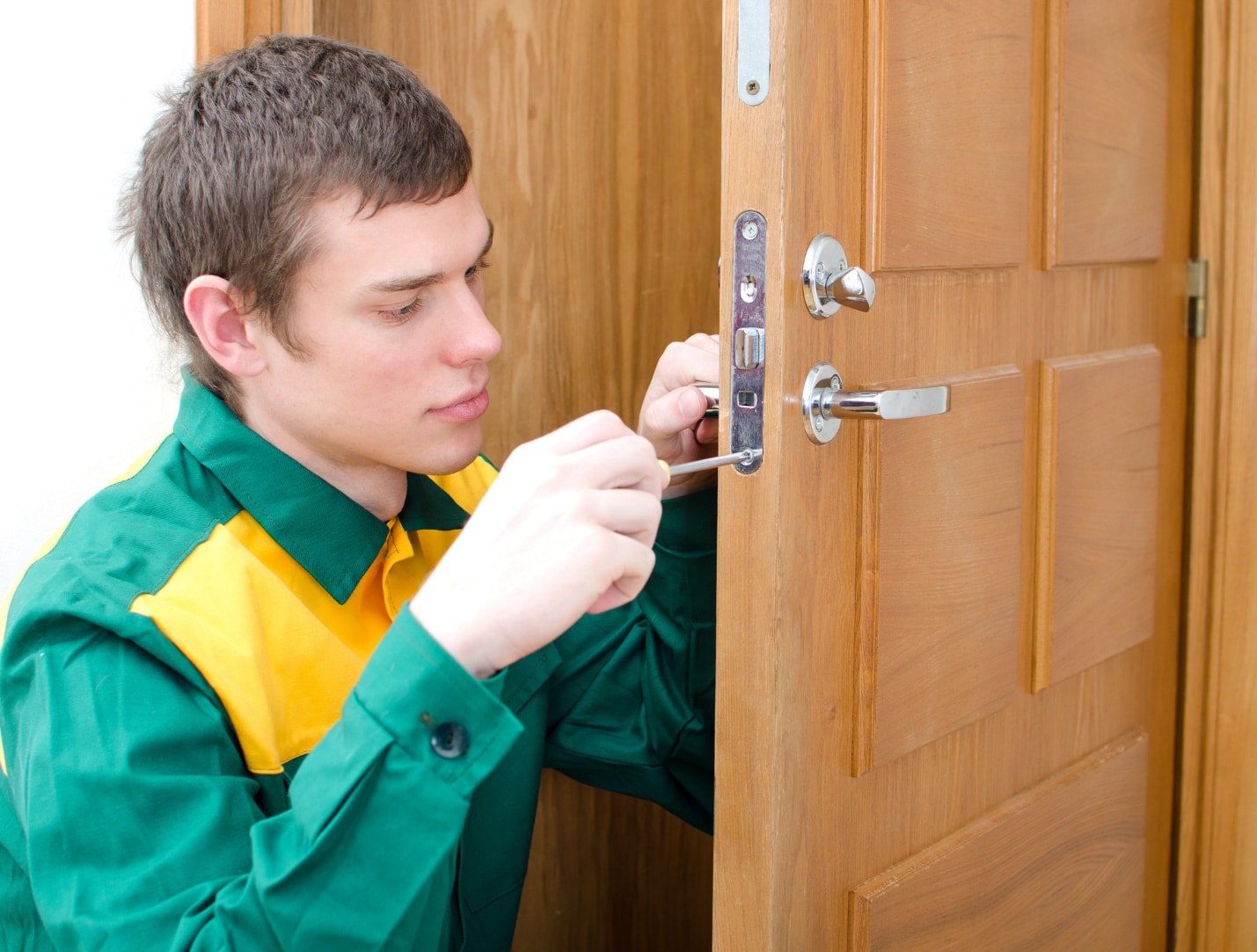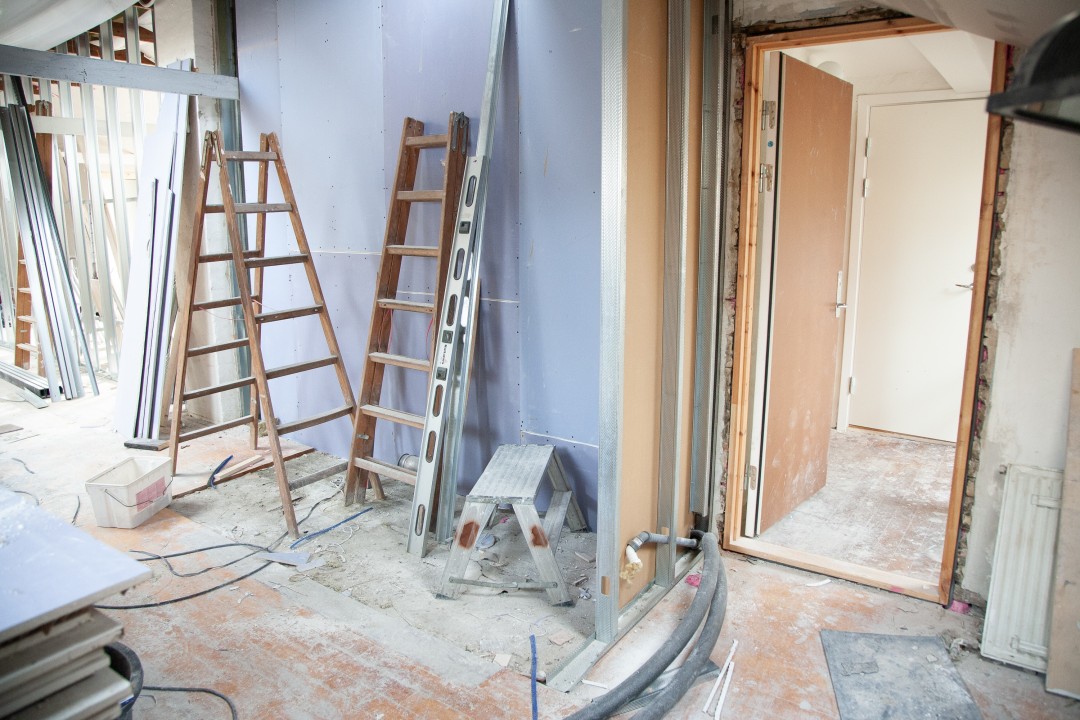Immediate and Long-Term Burst Pipe Repair Solutions
Burst pipes can feel like a homeowner’s nightmare come to life, sending torrents of water into your living space and threatening to cause extensive damage.
Whether it’s a result of frigid winter temperatures, an aging plumbing system, or accidental damage, a
burst pipe requires quick and decisive action to minimize damage and avoid costly burst pipe repair and replacement.
In this article, we’ll go through the critical steps you should take immediately following a burst pipe incident and explore long-term solutions to prevent future plumbing disasters.
Common Reasons Why Pipes Burst

A good understanding of the underlying issues that may damage your pipe system or cause it to burst can help you take preventive and proactive measures to protect your home. Here are some common reasons why pipes burst:
Freezing Temperatures: Water expands when it freezes inside the pipes creating pressure that can cause the pipe to crack or burst. This is especially common in unheated or poorly heated areas of the home, such as basements, attics, and garages.
Aging Pipes: Over time, pipes can deteriorate due to rust, metal corrosion, and general wear and tear. Pipes made from galvanized steel are more susceptible to bursting as they become brittle and weak.
High Water Pressure: Excessive water pressure can strain pipes, causing them to burst. Pipes are designed to withstand a certain amount of pressure, and when that limit is exceeded, the risk of bursting increases.
Blockages: Clogs and blockages in pipes can create increased pressure behind the obstruction. If the pressure builds up too much, it can cause the pipe to burst. Common culprits include grease, hair, and foreign objects that shouldn’t be flushed or washed down drains.
Poor Installation: Improperly installed pipes are more prone to bursting. This can include pipes that are not properly secured, joints that are not adequately sealed, or pipes that are subjected to undue stress due to poor layout and support.
Tree Roots: Tree roots can infiltrate underground pipes. As roots grow and expand, they can exert significant pressure on pipes, especially older or weakened ones, causing them to crack and burst.
Physical Damage: Pipes can be damaged by accidental impact, such as drilling into a wall without realizing there is a pipe behind it or construction activities that disturb buried pipes. This physical damage can weaken the pipe structure and lead to bursts.
Chemical Drain Cleaners: Frequent use of chemical drain cleaners can corrode pipes, especially older metal ones. The harsh chemicals in these cleaners can eat away at the pipe material, weakening it and causing it to eventually burst.
Immediate Actions to Take When a Pipe Bursts
A burst pipe in your property can quickly lead to significant water damage, but knowing the right immediate steps to take can drastically minimize the impact. Here’s how you can take control of the situation and mitigate damage effectively:
Shut Off the Water Supply
If you see water gushing from a pipe, shut the main water supply immediately to halt water flow and prevent further flooding. The main shut-off valve is typically near the water meter in basements, crawl spaces, or outside along the perimeter of your home.
Drain the System
Once the water supply is off, relieve the remaining pressure in the pipes by opening the faucets and flushing the toilets to reduce the risk of additional leakage.
Turn Off Electricity
Water and electricity are a hazardous mix. If the burst pipe is near electrical sockets and or appliances, turn off the electricity supply to the area to avoid electrocution risks.
Contain the Water
Use any available materials—buckets, towels, or a wet/dry vacuum—to contain and remove the water. To mitigate potential losses, move valuable items out of harm’s way.
Call a Professional Plumber
While some DIY plumbing maintenance and repairs might hold for a while, a burst pipe typically requires the skill, knowledge, and expertise of a professional plumber. Contact a licensed plumber near you to assess the damage, make the necessary repairs, and provide advice on preventing future incidents.
Document the Damage
Take videos and detailed photos of the affected areas for insurance claims purposes. Documentation is crucial to ensuring that you receive adequate compensation for repairs and replacements.
Begin Drying Out
Time is of the essence when it comes to drying out your home. Use fans, dehumidifiers, and open windows to expedite the drying process. Mold starts to develop within 24-48 hours, so quick action is crucial to prevent it.
Temporary Repairs for Burst Pipes

While waiting for professional help, you can implement temporary repairs to mitigate further damage. These fixes are not permanent solutions but can buy you some time:
Pipe Clamps: Pipe clamps are handy tools for temporarily sealing a burst pipe. Make sure the clamp is the right size for your pipe, and secure it tightly over the burst area to stop the leak.
Rubber Sheets and Hose Clamps: If you have a piece of rubber (such as from an old garden hose), wrap it around the burst area and secure it with hose clamps. This method can temporarily patch the pipe and reduce water flow.
Epoxy Putty: For small leaks, epoxy putty can be a lifesaver. Knead the putty until it’s pliable, apply it to the burst area, and allow it to cure according to the manufacturer’s instructions. This can provide a temporary seal until a plumber arrives.
Duct Tape: Although not ideal, tightly wrapping the burst pipe with duct tape can help contain the leak for a short period. Use multiple layers to ensure the best possible seal.
Long-Term Burst Pipe Repair Solutions
After addressing the immediate crisis, it’s important to consider long-term solutions to prevent future pipe bursts. Implementing these strategies can protect your home from similar plumbing emergencies:
Regular Inspections
Schedule annual plumbing inspections to catch potential issues before they become major problems. A professional plumber can identify weaknesses, corrosion, and other signs of wear that might lead to burst pipes.
Burst Pipe Replacement
Consider replacing them outdated or galvanized steel pipes with modern options such as PEX or copper. Pipes manufactured from these materials are more durable and less prone to bursting.
Insulate Pipes
lnsulate pipes in unheated areas of your home with foam sleeves or heat tape to keep them from freezing and bursting during cold weather. If you’re away, set the thermostat to at least 55°F (13°C) to prevent pipes from freezing.
Install a Pressure Regulator
Installing a pressure regulator can help maintain optimal pressure levels, extending the life of your plumbing system. Aim for a water pressure between 40 and 60 PSI (pounds per square inch).
Fix Leaks Promptly
Address leaks as soon as they’re noticed to prevent them from developing into major problems. Regularly check under sinks, around appliances, and in basements for signs of leaks.
Upgrade Plumbing Fixtures
Modern plumbing fixtures often come with built-in safety features that lower the risk of burst pipes. For instance, installing frost-free hose bibs can prevent outdoor faucets from freezing and causing indoor pipe bursts.
Consider Smart Home Technology
Smart water leak detectors and automatic shut-off valves can detect leaks early and shut off the water supply to prevent extensive damage. These systems are particularly useful for frequent travelers or those with second homes, so you can rest assured even when you’re away.
Protect Your Pipes with Proper Plumbing System Maintenance
Dealing with a burst pipe requires swift action to minimize damage and effective long-term solutions to prevent recurrence. With regular maintenance, timely upgrades, and the integration of smart technologies, you can significantly reduce the risk of future plumbing emergencies, ensuring peace of mind and a well-functioning plumbing system.







